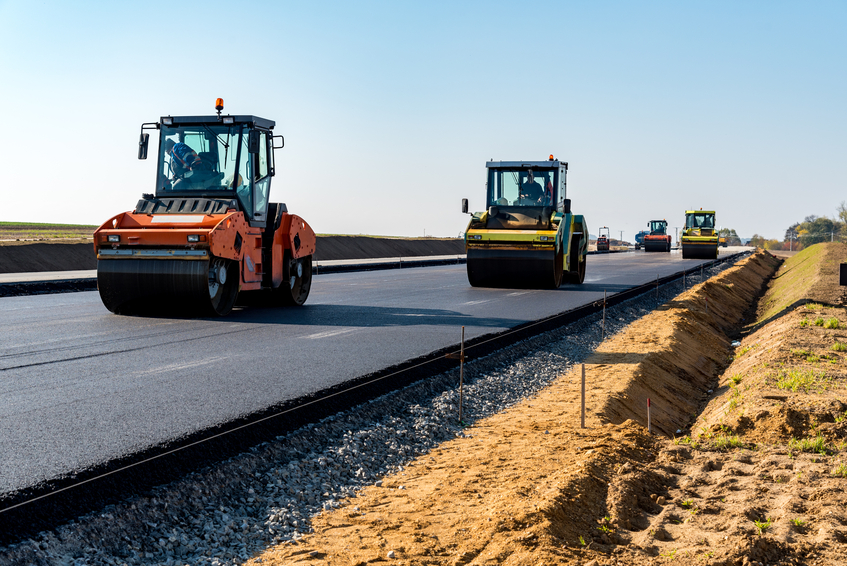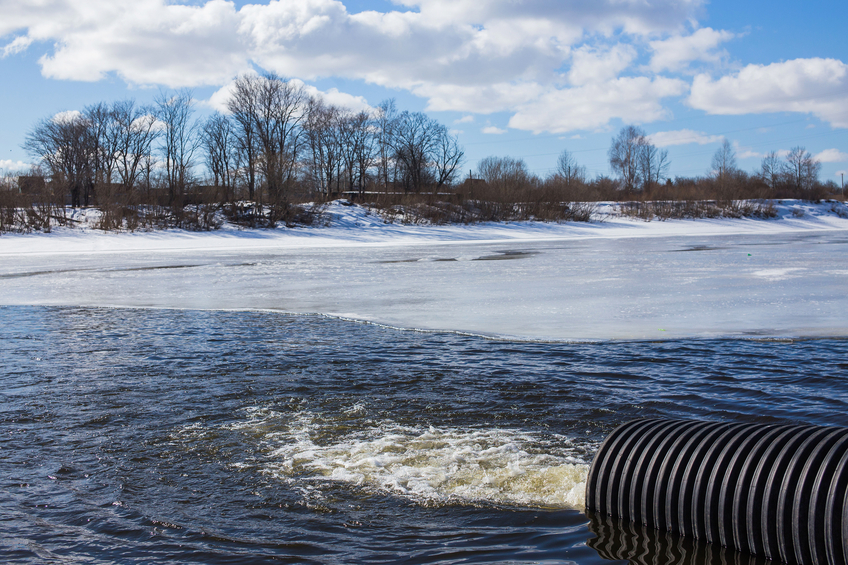New Jersey Civil and Ethics 24 PDH Discount Package 3
Integrating Green Infrastructure into Local Hazard Mitigation Plans (C02-082)
Pond Planning, Design and Construction (C05-014)
Building Terrorism Mitigation - Site Layout and Design (F05-002)
General Principles of Engineering Ethics (LE2-016)

This online engineering PDH course discusses the most common guidelines on the design, construction, maintenance, and rehabilitation of continuously reinforced concrete pavement (CRCP).
Continuously reinforced concrete pavement (CRCP) was introduced in the United States almost 100 years ago when the U.S. Bureau of Public Roads (now the Federal Highway Administration) constructed a CRCP test section on Columbia Pike in Arlington, Virginia. Since then, CRCP has been constructed in many states in the U.S. and in a number of other countries. As experience with the design and construction of CRCP has grown, a variety of lessons learned through practical experience and research have contributed to the development of best practices for CRCP throughout its life cycle.
Today, CRCP is designed and constructed as a pavement of choice for long-life performance, recognizing that initial smoothness will be maintained for decades and that maintenance during that time will be minimal.
This 10 PDH online course is applicable to civil engineers who are interested in learning about the design, construction and maintenance of CRCP as an ideal, long-life pavement solution for highly-trafficked and heavily-loaded roadways.
This PE continuing education course is intended to provide you with the following specific knowledge and skills:
- Familiarizing with the structure and design fundamentals of CRCP
- Learning about longitudinal and transverse reinforcement and the characteristics of reinforcing steel
- Learning about the different elements associated with CRCP construction
- Familiarizing with the performance of CRCP in the U.S. and other countries
- Gaining an overview of CRCP rehabilitation strategies, restoration and resurfacing
- Exploring the use of CRCP as an overlay
Upon successful completion of the quiz, print your Certificate of Completion instantly. (Note: if you are paying by check or money order, you will be able to print it after we receive your payment.) For your convenience, we will also email it to you. Please note that you can log in to your account at any time to access and print your Certificate of Completion.

This online engineering PDH course provides basic information on how communities can integrate green infrastructure into their Local Hazard Mitigation Plans.
Communities across the United States are facing a variety of challenges, from outdated infrastructure, to water quality protection, to the need to increase community resilience and mitigate the impacts of flooding and other hazards. These communities are looking for multi-purpose solutions to these challenges.
Green infrastructure is one approach to improve water quality and address flooding challenges. Green infrastructure yields many benefits, including improved water quality, reduced flooding, infrastructure cost savings, and healthier communities. While green infrastructure alone may not fully address these issues, however, it adds capacity, flexibility, and resilience to other infrastructure systems and provides multiple community benefits.
This 2 PDH online course is applicable to civil, environmental and stormwater engineers who are interested in examining how communities can integrate green infrastructure into their Local Hazard Mitigation Plans.
This PE continuing education course is intended to provide you with the following specific knowledge and skills:
- Familiarizing with the concept of developing a Local Hazard Mitigation Plan
- Understanding the issues, requirements and evolution of stormwater management
- Learning how to integrate green infrastructure into the mitigation planning process
- Identifying important considerations for communities interested in pursuing this approach
- Exploring the green infrastructure integration efforts in the area under study
Upon successful completion of the quiz, print your Certificate of Completion instantly. (Note: if you are paying by check or money order, you will be able to print it after we receive your payment.) For your convenience, we will also email it to you. Please note that you can log in to your account at any time to access and print your Certificate of Completion.

This online engineering PDH course describes basic design principles of embankment and excavation ponds as well as construction requirements. Other topics include: water needs, preliminary soil investigations, watershed & stormwater runoff estimation, basin sealing, spillways and inlets, and operation & maintenance.
This 5 PDH online course is intended for hydrologists, civil engineers, agricultural engineers, construction engineers, municipal engineers, geotechnical engineers and environmental engineers. An attendee of this course will gain knowledge about planning, design, and construction of embankment and excavated ponds.
This PE continuing education course is intended to provide you with the following specific knowledge and skills:
- Be familiar with the general features of embankment and excavated ponds and the differences between them
- Be familiar with the items to be covered in a preliminary investigation
- Be able estimate storm water runoff quantity and rate using the runoff curve number method
- Be able to estimate the time of concentration for a watershed for a given flow length, average watershed slope, and runoff curve number
- Be familiar with the general features of a hooded or canopy inlet spillway and a drop inlet spillway, as well as the advantages and disadvantages of each
- Be able to make spillway design calculations using tables and figures given in the course file
- Be able to estimate embankment end area for known embankment height, side slopes, and top width
- Be able to estimate earthfill requirements for an embankment for known end areas and embankment length
- Be familiar with alternative pond sealing methods and comparisons among them
Upon successful completion of the quiz, print your Certificate of Completion instantly. (Note: if you are paying by check or money order, you will be able to print it after we receive your payment.) For your convenience, we will also email it to you. Please note that you can log in to your account at any time to access and print your Certificate of Completion.

This online engineering PDH course discusses site-level considerations for development. The intent of this guidance is to provide concepts for integrating land use planning, landscape architecture (vegetation, landforms, and water), site planning, and other strategies to mitigate the design basis threats as identified via the risk assessment.
Integrating security requirements into a larger, more comprehensive approach necessitates achieving a balance among many objectives such as reducing risk; facilitating proper building function; aesthetics and matching architecture; hardening of physical structures beyond required building codes and standards; and maximizing use of non-structural systems.
This 5 PDH online course is applicable to engineers, planners, architects, landscape designers, construction and operations personnel, security and law enforcement agents, as well as consultants and contractors to gain a better understanding in identifying and implementing crucial asset protection measures when planning and designing the site against potential terrorist attacks.
This PE continuing education course is intended to provide you with the following specific knowledge and skills:
- Planning the use of land
- Selection the site
- Orienting the buildings on the site
- Integrating vehicle access, control points, physical barriers, landscaping and parking,
- Protecting utilities for threat mitigation
In this professional engineering CEU course, you need to review Chapter 2 "Site Layout and Design Guidance" of the FEMA Publication, "Mitigating Potential Terrorist Attacks Against Buildings" (FEMA 426).
Upon successful completion of the quiz, print your Certificate of Completion instantly. (Note: if you are paying by check or money order, you will be able to print it after we receive your payment.) For your convenience, we will also email it to you. Please note that you can log in to your account at any time to access and print your Certificate of Completion.

This online engineering PDH course presents the principles of engineering ethics that every engineer is expected to live by when practicing their profession.
Engineering ethics is (1) the study of moral issues and decisions confronting individuals and organizations involved in engineering and (2) the study of related questions about moral conduct, character, ideals and relationships of peoples and organizations involved in technological development (Martin and Schinzinger, Ethics in Engineering).
This course describes the fundamental legal concepts with which very engineer should be familiar. It also presents unique disciplinary case studies selected from across the nation, as well as hypothetical ethical challenges that demonstrate how difficult it can be to apply the code of ethics for engineers.
This 2 PDH online course is applicable to all professional engineers who are either required to fulfill 2 PDH in engineering ethics or are interested in broadening their understanding of what it means to practice and uphold the honor and integrity of their engineering profession while holding the utmost safety, health, and welfare of the public.
This PE continuing education course is intended to provide you with the following specific knowledge and skills:
- Understanding the common definition of ethics regarding engineering
- Learning about the important principles of the engineer’s professional responsibility
- Learning the do’s and don’ts through several ethical and disciplinary cases
- Understanding what it means to practise and uphold the honor and integrity of the engineering profession
Upon successful completion of the quiz, print your Certificate of Completion instantly. (Note: if you are paying by check or money order, you will be able to print it after we receive your payment.) For your convenience, we will also email it to you. Please note that you can log in to your account at any time to access and print your Certificate of Completion.